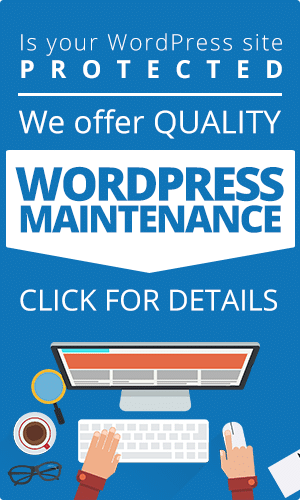WordPress is one of the most popular content management systems available today. However, WordPress users must take extra steps to ensure their website is secure from potential security threats.
A comprehensive security audit, which includes updating core software, plugins and themes, checking user accounts and passwords, running a scan for any vulnerabilities, and setting up backups can help protect against malicious attacks.
Automating the process with plugins can also help monitor user activity in real-time while patching vulnerabilities through updates and deleting unauthorized accounts are additional important steps that must be taken.
By following these steps, WordPress users can better maintain the security of their website while preventing future issues from arising.
Key Takeaways
- Regular WordPress security audits are important to review and strengthen security policies.
- Updating WordPress and its components, ensuring backup systems are working, and assessing usernames, passwords, and database names are essential steps for conducting a security audit.
- Regularly backing up website data is crucial for its safety.
- Implementing security measures such as two-factor authentication, login attempt limitations, and removing inactive users can help prevent unauthorized access.
What Is a WordPress Security Audit and Why They’re Important?
A WordPress security audit is an important process in which website administrators can identify security vulnerabilities, update components, and ensure backup systems are working properly in order to protect the website from potential risks.
A WordPress security audit involves examining a website for any potential weaknesses or vulnerabilities that could lead to a security breach. This includes reviewing user accounts, passwords, database names, plugins, themes and other components of the site for any outdated software or malicious code.
Security audits also include checking for malware and running checklists to look for any suspicious activity. Additionally, it is important to set up a backup plugin like UpdraftPlus in order to quickly recover from any data loss due to hacking attempts or accidental deletion.
Finally, using a security plugin like Sucuri or Wordfence can help protect the website from future attacks by monitoring changes and blocking malicious traffic. Taking these measures will help prevent security issues before they become major problems.
When and how often to Perform a WordPress Security Audit
Conducting an in-depth evaluation of website safety measures on a regular basis is essential for protecting the security of any WordPress site. It is recommended to conduct a security audit at least once a year, or more frequently for large or sensitive websites.
To ensure the highest level of security:
Update all components of WordPress and plugins. Perform backups regularly. Check user accounts and passwords. Use security tools like Sucuri or Wordfence to scan for vulnerabilities and protect against hacking attempts.
For additional protection, use a login activity log plugin such as WP Security Audit Log to track user activity, check login attempts, and monitor IP addresses associated with any suspicious activities.
It is also important to delete inactive users from your WordPress user list to prevent unauthorized access.
Following these steps can help prevent future security issues while ensuring that the website remains secure and stable over time.
How to Perform a Manual WordPress Security Audit
Manually assessing website safety measures to identify security breaches is an important step in maintaining the integrity of a WordPress site.
Performing a manual WordPress security audit involves:
- Updating all software components
- Protecting logins
- Enforcing strong password practices
It is recommended to use plugins like WP Activity Log and Sucuri for automated scans.
Additionally, it is important to:
- Review user accounts for suspicious activity
- Delete any unauthorized accounts
Security vulnerabilities can be identified through online scanners like IsItWP Security Scanner, and malware removal services can be offered by Sucuri.
Furthermore, regular updates should be performed on:
- Core files
- Plugins
- Themes
This helps in patching any existing vulnerabilities and improving performance.
Lastly, backups should also be set up with a plugin like UpdraftPlus in order to recover from any potential security issues or data loss events.
Following these steps can help protect website security and stability while providing peace of mind that all necessary measures have been taken to maintain a secure WordPress site.
How to Perform an Automatic WordPress Security Audit
Automating the security audit process of a WordPress site is an effective way to ensure the website remains secure.
Using a plugin like WP Activity Log, users can track user activity and monitor logins, IP addresses, and any other actions taken on the site. The plugin also allows users to end suspicious sessions quickly.
To perform a full security audit for most websites, WordPress core should be updated regularly along with plugins and themes. This ensures that there are no security loopholes in the website’s coding.
Additionally, checking all user logins as well as passwords for unauthorized accounts is important during an audit. Database names should also be checked in case of any malicious changes.
Hosting providers should also be reviewed for any possible issues with their services or web servers that may affect the website’s performance or security.
Finally, regular scans using online security scanners such as IsItWP Security Scanner can help detect malware or malicious code to identify potential vulnerabilities in the website’s database and server configuration files.
Automating these steps can save time and make it easier to keep up with regular security audits.
With these measures, organizations can easily ensure their WordPress sites are secure from potential threats or attacks while continuing to provide its users with a safe digital experience.
Frequently Asked Questions
What is the best way to protect my website from a brute force attack?
Brute force attacks can be prevented by implementing two-factor authentication, limiting login attempts, and using strong passwords. Additionally, removing inactive users and regularly scanning for vulnerabilities with security plugins such as Sucuri or Wordfence can help protect the website.
What type of security plugins should I use for my WordPress website?
Meticulous security measures are essential for a secure WordPress website. Security plugins such as WP Activity Log, Sucuri and Wordfence provide real-time protection against malicious attacks. Automate the audit process with these robust tools to safeguard your website and keep it safe.
How do I know if my website has been hacked?
Signs of a hacked website include unexpected changes to content, user accounts, or settings; suspicious files in the WordPress directory; strange server activity; and a sudden drop in website ranking or traffic.
What are the risks of not conducting regular security audits?
Not conducting regular security audits can put a website at risk of malware, hacking, data loss, and other security issues. These risks can lead to financial losses, legal liabilities, and loss of customer trust.
What should I do if I find a vulnerability in my WordPress website?
If a vulnerability is found on a WordPress website, it is important to address the issue quickly by updating software, changing passwords and removing any unused plugins or themes. Additionally, security plugins can be used to protect the website from future risks.
Conclusion
Conducting a comprehensive security audit of a WordPress website is essential in order to ensure the safety of the website and its users. Regular security audits can help identify and fix potential vulnerabilities and breaches, as well as prevent further issues from arising in the future.
Manual audits involve:
- Updating core, plugins, and themes
- Checking user accounts and passwords
- Running scans
- Setting up backups
Automated audits use plugins such as WP Activity Log or Sucuri to monitor activity in real-time.
Other important steps include:
- Reviewing analytics data
- Patching vulnerabilities with updates
- Deleting unauthorized accounts.
Taking the necessary measures now will provide protection for years to come.
Don’t have time to keep up with your website maintenance? We would be honored to help, signup for an affordable WordPress maintenace plan today!






